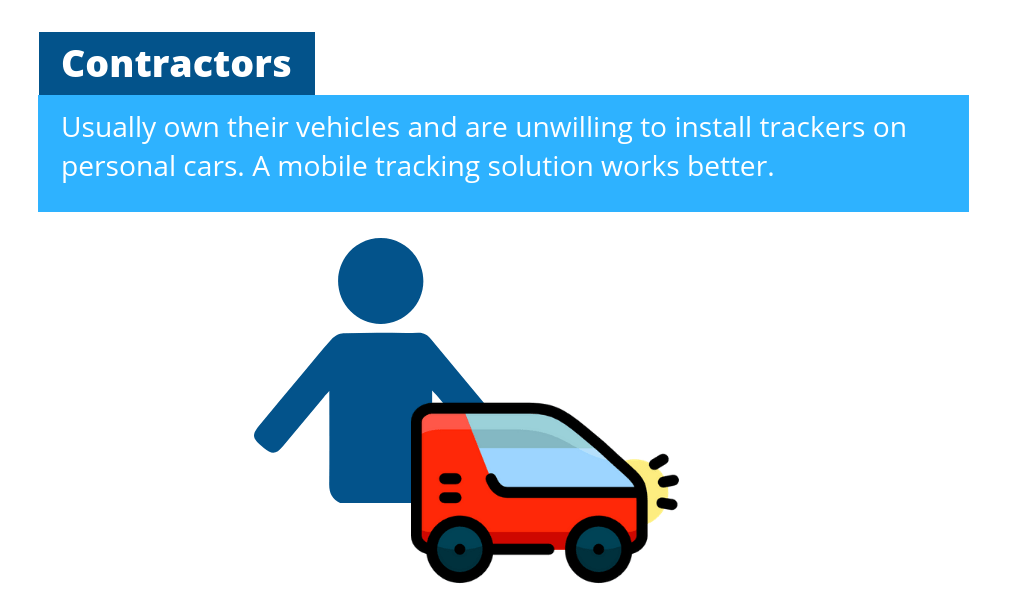As businesses continue to seek ways to minimize their operating costs, maximizing fuel efficiency has become a crucial consideration. Fuel expenses can represent a significant portion of a company’s budget, especially for those with a large fleet of vehicles. This is where a fleet tracking system can prove invaluable, offering enhanced insight into fuel consumption patterns, including inefficient or unusual activities such as idling and theft. By implementing a fleet tracking system, businesses can gain a comprehensive overview of their operations and make data-driven decisions to optimize their fuel economy and minimize overall expenses.
The Importance of Fuel Efficiency for Businesses
Fuel efficiency has become a vital consideration for businesses of all sizes, with fuel expenses representing a substantial operating cost. This is especially true for companies with large fleets of vehicles that require regular refueling. The cost of fuel can be unpredictable and is subject to market fluctuations, which can make budgeting and forecasting difficult.
Additionally, fuel consumption has a direct impact on a business’s environmental footprint, making it a critical consideration for those committed to reducing their carbon footprint.
Maximizing fuel efficiency offers numerous benefits for businesses. It can result in significant cost savings, increased productivity, and improved customer satisfaction. By reducing fuel consumption, businesses can allocate more resources to other areas of their operations, such as hiring new staff, investing in new technologies, or expanding their product lines.
Improved fuel efficiency can also result in increased productivity, as vehicles spend less time refueling or undergoing maintenance, allowing them to spend more time on the road, serving customers.
Advantages of Implementing a Fleet Tracking System
Implementing a tracking system offers numerous advantages for businesses that rely on a vehicle fleet. By providing real-time data on vehicle performance and driver behavior, these systems can help businesses optimize their operations and achieve significant cost savings.
Some of the advantages of implementing a fleet tracking system include reduced fuel costs, improved fleet efficiency, environmental benefits, and increased driver accountability. In this article, we will explore these advantages in more detail and provide insights into how businesses can optimize their operations by implementing a fleet tracking system.
Reduced fuel costs
Fuel costs are a major expense for businesses that rely on a vehicle fleet. With rising fuel prices and fluctuating demand, reducing fuel costs is a top priority for many businesses. A fleet tracking system can reduce fuel costs by monitoring fuel consumption data, optimizing routes, and promoting eco-friendly driving habits among drivers.
1. Identification of fuel wastage
One of the most significant advantages of implementing a fleet tracking system is the identification of fuel wastage. By monitoring fuel consumption in real-time, businesses can identify inefficiencies quickly and take corrective action.
2. Better route planning
Another advantage of fleet tracking systems is better route planning. By using real-time GPS data, businesses can optimize their routes to reduce distance and travel time, resulting in significant cost savings.
Improved fleet efficiency
1. Enhanced scheduling and dispatching
Fleet tracking systems can also improve fleet efficiency by enhancing scheduling and dispatching. By providing real-time data on vehicle location and availability, businesses can optimize their scheduling and dispatching processes, ensuring that vehicles are used efficiently and that jobs are completed on time. Typically, organizations that implement a fleet tracking system can increase their fleet productivity by up to 25%.
2. Reduced vehicle idle time
Another advantage of fleet tracking systems is reduced vehicle idle time. By monitoring vehicle activity in real-time, businesses can identify instances of excessive idling and take corrective action. According to a study by Geotab, businesses that implement idle reduction programs can reduce their fuel consumption by up to 25%.
This is achieved through a combination of factors, including improved driver behavior and better vehicle maintenance.
Environmental benefits
1. Lower greenhouse gas emissions
Implementing a fleet tracking system can also lead to lower greenhouse gas emissions. By reducing fuel consumption and vehicle idle time, businesses can reduce their carbon footprint and contribute to a more sustainable future. On average, businesses that implement a fleet tracking system can reduce their greenhouse gas emissions by up to 20%.
2. Compliance with regulations
Fleet tracking systems can also help businesses comply with environmental regulations. For example, in the United States, the Environmental Protection Agency (EPA) has established regulations that limit the amount of greenhouse gasses that can be emitted by vehicles. By implementing a fleet tracking system, businesses can ensure that their vehicles are operating efficiently and that they are in compliance with these regulations.
Increased driver accountability
1. Monitoring driver performance
Fleet tracking systems can also increase driver accountability by monitoring driver performance. By collecting data on driver behavior, businesses can identify areas where drivers may need additional training or support. For example, businesses can use this data to identify drivers who are engaging in unsafe driving practices, such as excessive speeding or harsh braking, and provide coaching to improve their behavior.
2. Implementing targeted training programs
In addition to monitoring driver performance, fleet tracking systems can also be used to implement targeted training programs. By identifying areas where drivers may need additional training or support, businesses can provide targeted coaching to improve their behavior. This can result in improved driver performance, increased safety, and reduced fuel consumption.
Implementing a fleet tracking system offers numerous advantages for businesses. By reducing fuel costs, improving fleet efficiency, providing environmental benefits, and increasing driver accountability, these systems can help businesses achieve significant cost savings, reduce their carbon footprint, and improve their operations.
With the potential to increase productivity, reduce vehicle downtime, and improve customer satisfaction, fleet tracking systems are a valuable investment for any business with a vehicle fleet.
The Fleet Tracking System: An Overview
With the potential to reduce fuel costs, improve fleet efficiency, and increase driver accountability, implementing a fleet tracking system is a valuable investment for any business with a vehicle fleet. In this article, we will provide an overview of fleet tracking systems, including their key components and how they help businesses optimize their fuel consumption.
What is a fleet tracking system?
Fleet tracking systems are designed to help businesses monitor and manage their vehicle fleets. These systems use GPS tracking and telematics technology to collect data on vehicle location, speed, fuel consumption, and driver behavior, among other things. This data is then analyzed to provide businesses with valuable insights into their operations, enabling them to make data-driven decisions to improve efficiency and reduce costs.
GPS fleet vehicle tracking and management systems
These systems use a combination of GPS technology, cellular networks, and on-board sensors to track and monitor vehicle activity. These systems collect data on vehicle location, speed, and fuel consumption, as well as driver behavior, such as harsh braking or acceleration. This data is transmitted to a central server, where it is processed and analyzed to provide businesses with insights into their fleet operations.
How they help businesses optimize fuel consumption
Fleet tracking systems offer numerous benefits for businesses looking to optimize fuel consumption. By providing real-time data on fuel consumption and driver behavior, these systems enable businesses to identify inefficiencies quickly and take corrective action.
For example, businesses can use this data to identify vehicles that are idling excessively or drivers who are accelerating too aggressively, and take steps to address these issues.
Businesses that implement a fleet tracking system can reduce their fuel consumption by up to 15%. This is achieved through a combination of factors, including improved route planning, reduced idling time, and better driver behavior. By optimizing these areas, businesses can achieve significant cost savings and reduce their environmental footprint.
Key components of a fleet tracking system
1. Fuel consumption monitoring
Fuel consumption monitoring is one of the key components of a fleet tracking system. By collecting data on fuel usage in real-time, businesses can identify inefficiencies quickly and take corrective action. For example, businesses can use this data to identify vehicles that are idling excessively or drivers who are accelerating too aggressively, and take steps to address these issues.
According to a study by Geotab, businesses that implement fuel consumption monitoring can reduce their fuel consumption by up to 30%. This is achieved through a combination of factors, including reduced idling time, improved driver behavior, and better route planning.
2. Route optimization
Route optimization is another critical component of a fleet tracking system. By using real-time GPS data, businesses can optimize their routes to reduce distance and travel time, resulting in significant cost savings. This is achieved through the use of algorithms that calculate the most efficient route based on a range of factors, including traffic congestion, road closures, and customer locations.
3. Vehicle maintenance tracking
Vehicle maintenance tracking is another key component of a fleet tracking system. By collecting data on vehicle performance and maintenance needs, businesses can identify issues before they become costly problems. For example, businesses can use this data to identify vehicles that require maintenance, such as oil changes or tire rotations, and schedule these services before they become a problem.
4. Driver behavior analysis
Driver behavior analysis is a crucial component of a fleet tracking system. By collecting data on driver behavior, businesses can identify areas where drivers may need additional training or support. For example, businesses can use this data to identify drivers who are engaging in unsafe driving practices, such as excessive speeding or harsh braking, and provide coaching to improve their behavior.
By reducing wear and tear on vehicles and fewer accidents due to improved driver behavior, fuel consumption can similarly be reduced by up to 15%. This is achieved through a combination of factors, including improved driver behavior, reduced wear and tear on vehicles, and reduced accident rates.
Fleet tracking systems are essential tools for businesses looking to optimize fuel consumption and reduce operating costs. By providing real-time data on fuel consumption, route optimization, vehicle maintenance, and driver behavior, these systems enable businesses to identify inefficiencies quickly and take corrective action.
With the potential to achieve significant cost savings and reduce their environmental footprint, fleet tracking systems are a wise investment for any business with a vehicle fleet.
Best Practices for Maximizing Fuel Efficiency with a Fleet Tracking System
Maximizing fuel efficiency is a top priority for businesses that rely on a vehicle fleet. By implementing best practices for fuel efficiency with a fleet tracking system, businesses can achieve significant cost savings and reduce their environmental footprint.
Some of the best practices for maximizing fuel efficiency include regularly monitoring and analyzing fuel consumption data, optimizing routes using real-time traffic updates, implementing preventive maintenance schedules, encouraging eco-friendly driving habits, and periodically reviewing and updating fuel efficiency strategies.
In this section, we will explore these best practices in more detail and provide insights into how businesses can optimize their fuel efficiency with a fleet tracking system.
Regularly monitor and analyze fuel consumption data
Regularly monitoring and analyzing fuel consumption data is a critical best practice for maximizing fuel efficiency with a fleet tracking system. By tracking fuel consumption data in real-time, businesses can identify inefficiencies quickly and take corrective action.
To implement this best practice, businesses should set up regular fuel consumption reports and analyze the data to identify trends and anomalies. This will enable businesses to identify areas where fuel consumption is higher than expected and take corrective action.
Optimize routes using real-time traffic updates
Optimizing routes using real-time traffic updates is another critical best practice for maximizing fuel efficiency with a fleet tracking system. By using real-time traffic data, businesses can optimize their routes to reduce travel time and distance, resulting in significant cost savings.
To implement this best practice, businesses should use a fleet tracking system that provides real-time traffic updates and route optimization features. By using these features, businesses can optimize their routes to avoid traffic congestion and reduce travel time.
Implement preventive maintenance schedules
Implementing preventive maintenance schedules is another critical best practice for maximizing fuel efficiency with a fleet tracking system. By implementing preventive maintenance schedules, businesses can identify issues before they become costly problems.
To implement this best practice, businesses should use a fleet tracking system that provides real-time data on vehicle performance and maintenance needs. By using this data, businesses can identify vehicles that require maintenance, such as oil changes or tire rotations, and schedule these services before they become a problem.
Encourage and incentivize eco-friendly driving habits among drivers
Encouraging and incentivizing eco-friendly driving habits among drivers is another critical best practice for maximizing fuel efficiency with a fleet tracking system. By promoting eco-friendly driving habits, businesses can reduce fuel consumption and improve their environmental footprint.
To implement this best practice, businesses should provide training to their drivers on eco-friendly driving habits, such as reducing idling time, avoiding harsh acceleration and braking, and maintaining a consistent speed. Businesses can also incentivize eco-friendly driving habits by providing rewards or bonuses to drivers who demonstrate good driving habits.
Periodically review and update your fuel efficiency strategies
Periodically reviewing and updating your fuel efficiency strategies is a critical best practice for maximizing fuel efficiency with a fleet tracking system. By reviewing your strategies periodically, businesses can identify areas where they can improve their fuel efficiency and take corrective action.
To implement this best practice, businesses should set up regular reviews of their fuel efficiency strategies and analyze the data to identify areas where they can improve. This could include updating their preventive maintenance schedules, implementing new driver training programs, or revising their route optimization strategies.
Implementing best practices for maximizing fuel efficiency with a fleet tracking system can help businesses achieve significant cost savings and reduce their environmental footprint. By regularly monitoring and analyzing fuel consumption data, optimizing routes using real-time traffic updates, implementing preventive maintenance schedules, encouraging and incentivizing eco-friendly driving habits among drivers, and periodically reviewing and updating fuel efficiency strategies, businesses can achieve maximum fuel efficiency and optimize their fleet operations.
With the potential to increase productivity, reduce vehicle downtime, and improve customer satisfaction, implementing best practices for maximizing fuel efficiency with a fleet tracking system is a valuable investment for any business with a vehicle fleet.
Success Stories of Companies Using Fleet Tracking Systems
Several companies have achieved significant cost savings and optimized their fleet operations by implementing fleet tracking systems. By monitoring fuel consumption data, optimizing routes, and promoting eco-friendly driving habits among drivers, these companies have been able to reduce their fuel costs, improve their environmental footprint, and increase their bottom line.
Here, we will showcase success stories of companies that have implemented fleet tracking systems and achieved significant cost savings. We will also provide insights into how these companies optimized their fleet tracking systems and key takeaways for other businesses looking to maximize their fuel efficiency with a fleet tracking system.
Overview of businesses that have achieved significant fuel savings
Several businesses have achieved significant fuel savings by implementing fleet tracking systems. One such example is Velocity Rail Solutions, a direct-to-locomotive fueling and locomotive servicing company that serves Class 1 railroads at more than 60 locations.
After reviewing various options, Velocity Rail found that ZenduIT provided the best solutions that met their current and possible future needs. By leveraging ZenduIT’s maintenance management solution, ZenduMaintenance, they found that they were able to easily streamline processes and build a better maintenance management program. This allowed them to remotely manage, monitor and be everywhere at any given moment.
Since working with ZenduIT, Velocity Rail has been able to boost efficiency and extend the lifespan of equipment from 4-5 years up to 10 years. They also used the system to track other aspects of their business other than maintenance like meetings, due dates for items, safety inspections and administrative tasks, making it easier to manage 73 locations in 28 different states.
Another example is Daniels Sharpsmart Canada Limited, a company that provides experience and expertise for biomedical waste management and disposal. DSC is a prominent player in the Canadian healthcare market, offering hospitals and other medical waste generators containers for the safe collection and disposal of biohazard medical and sharps waste.
Through the use of Go Devices and Geotab tablets, the Daniels team has significantly enhanced their fleet and operations’ visibility. They have effectively minimized costs by accurately tracking each vehicle’s location, route, and reducing idling by more than 20%.
Additionally, they have improved customer stops by 10%. The DSC finds the monthly reporting feature invaluable as it quantifies their success and budgetary improvements, indicating actual dollar values.
To further improve their driving behavior, the Daniels team paired up with ZenduiT’s solutions. The ZenScore driver scoring system monitors and rates driving behavior, providing managers with complete visibility into their fleet’s safety and key driving behavior that requires attention. Consequently, the DSC reported a 25% reduction in driving concerns.
With ZenduMaintenance, the Daniels team has effectively monitored and conducted proper preventative maintenance on their vehicles, ensuring minimal breakdowns or repair costs while transporting hazardous materials.
In both cases, these organizations optimized their fleet tracking systems by implementing several best practices for maximizing fuel efficiency. These practices included:
- Regularly monitoring and analyzing fuel consumption data: Both Aramark and UPS regularly monitored and analyzed their fuel consumption data to identify inefficiencies and take corrective action. For example, UPS used real-time data to identify trucks that were idling excessively and took corrective action by implementing idle reduction programs.
- Optimizing routes using real-time traffic updates: Both Aramark and UPS optimized their routes using real-time traffic updates to reduce travel time and distance. This resulted in significant cost savings and reduced fuel consumption.
- Implementing preventive maintenance schedules: Both Aramark and UPS implemented preventive maintenance schedules to identify issues before they became costly problems. This reduced maintenance costs and improved vehicle performance.
- Encouraging and incentivizing eco-friendly driving habits among drivers: Both Aramark and UPS encouraged and incentivized eco-friendly driving habits among drivers to reduce fuel consumption. For example, UPS implemented a driver training program to promote eco-friendly driving habits, such as reducing idling time and maintaining a consistent speed.
The success stories of Aramark and UPS provide several key takeaways for other businesses looking to maximize fuel efficiency with fleet tracking systems. These include:
- Regularly monitor and analyze fuel consumption data to identify inefficiencies and take corrective action.
- Use real-time traffic updates to optimize routes and reduce travel time and distance.
- Implement preventive maintenance schedules to identify issues before they become costly problems.
- Encourage and incentivize eco-friendly driving habits among drivers to reduce fuel consumption.
- Continuously review and update fuel efficiency strategies to identify areas for improvement and take corrective action.
By implementing these best practices, businesses can achieve significant cost savings and reduce their environmental footprint. With the potential to increase productivity, reduce vehicle downtime, and improve customer satisfaction, implementing a fleet tracking system is a valuable investment for any business with a vehicle fleet.
Conclusion
Implementing a fleet tracking system is an effective way for businesses to optimize their fleet operations and maximize fuel efficiency. By tracking fuel consumption data, optimizing routes using real-time traffic updates, implementing preventive maintenance schedules, encouraging eco-friendly driving habits, and periodically reviewing and updating fuel efficiency strategies, businesses can achieve significant cost savings and reduce their environmental footprint.
The benefits of using a fleet tracking system for fuel efficiency are numerous. By reducing fuel costs, improving fleet efficiency, providing environmental benefits, and increasing driver accountability, businesses can achieve significant cost savings and improve their operations.
Moreover, the potential cost savings and environmental benefits of implementing a fleet tracking system are substantial. By reducing fuel consumption, businesses can save thousands of dollars in fuel costs annually. Additionally, by reducing their environmental footprint, businesses can promote sustainable business practices and demonstrate their commitment to social responsibility.
We strongly encourage businesses to adopt a fleet tracking system to optimize their fleet operations and maximize fuel efficiency. With the potential to increase productivity, reduce vehicle downtime, and improve customer satisfaction, a fleet tracking system is a valuable investment for any business with a vehicle fleet.
In conclusion, businesses that implement fleet tracking systems can achieve significant cost savings, reduce their environmental footprint, and improve their operations. With the potential to optimize fleet operations and maximize fuel efficiency, a fleet tracking system is a valuable investment for any business looking to improve their bottom line and promote sustainable business practices.
Are you ready to maximize your fleet’s fuel efficiency and reduce costs? Contact us today to learn how our fleet tracking system can help you achieve your goals! Our GPS fleet vehicle tracking and management systems are tailored to meet your specific needs and ensure you get the most out of your investment. Don’t wait any longer, schedule a demo now and see how our solution can transform your fleet management operations






